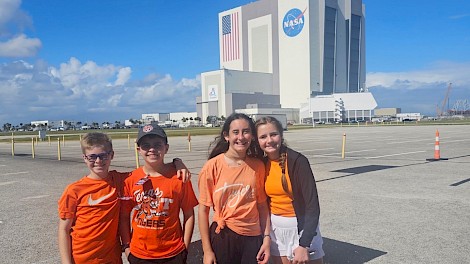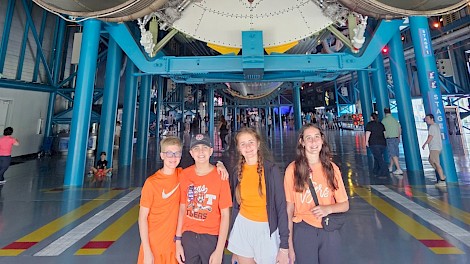Young Texarkana ISD Scientists Send Experiment into Space

In an inspiring achievement, fifth-grade students from Martha and Josh Morriss Mathematics & Engineering Elementary School recently saw their scientific dreams launched beyond the Texarkana skyline—all the way to space. Their microgravity experiment, titled "Will Normal Strength Concrete Keep Its Structure in Microgravity?" was chosen from hundreds of submissions and rocketed into orbit aboard SpaceX-31 from Kennedy Space Center on November 4, 2024. This rare opportunity came as part of the Student Spaceflight Experiments Program (SSEP), an initiative that partners with NASA to foster hands-on STEM experiences.
The journey began last fall when the students, now sixth-graders at Texas Middle School, immersed themselves in microgravity experimental design under the guidance of their teacher, Mrs. Marie Goodwin. Lynnley Galloway, Lizzy LaGrone, Isaac Steele, and Cooper Wood—all former fifth graders at Morriss Elementary School—collaborated to explore whether normal-strength concrete could maintain its structure in the unique environment of space. After six weeks of research and experimentation, their project emerged as a top contender in Texarkana ISD's internal competition, advancing to the National Center for Earth and Space Science Education's review board.
Reflecting on the experience, student Lynnley Galloway shared, "The trip was so cool. We got to spend the day at Kennedy Space Center and then go to a private launch spot to watch the rocket launch. I couldn't believe something we made was on that rocket."
Isaac Steele echoed the wonder of the moment, saying, "Watching the rocket detach from the boosters was like nothing I had ever seen. It looked like a supernova. It was one of the most amazing things I have ever experienced. It was amazing to know that something I had touched was in space. I am thankful for my teachers, Mrs. Goodwin and Mrs. Ayers. Without them, we would not have had our project in space."
Texarkana ISD's participation in SSEP—alongside 36 other communities across the U.S., Ukraine, and Canada—highlights the district's dedication to engaging students in advanced STEM fields. Dr. Doug Brubaker, Superintendent of Texarkana ISD, praised the students, saying, "We are very proud of our students. It is a huge accomplishment for their experiment to be selected from so many SSEP submissions. This not only highlights their hard work and creativity but also inspires all of our students to dream big and explore the possibilities offered by careers in science, technology, education, and mathematics (STEM). The success of these students powerfully illustrates the idea that you just never know how far your education can take you."
Launching from the iconic Complex 39A, a site synonymous with Apollo missions, the students' experiment will be conducted 250 miles above Earth on the International Space Station, where astronauts will follow the team's instructions to assess how concrete behaves under microgravity. This experiment could lead to breakthroughs in how we build in space, and perhaps one day even pave the way for off-planet infrastructure.
As students across Texarkana ISD look up and watch their classmates' project reach new heights, the program continues to fuel curiosity and ambition, reminding young learners that their ideas, when given the right environment, can truly be out of this world.
About the SSEP:
The Student Spaceflight Experiments Program (SSEP) is a program of the National Center for Earth and Space Science Education (NCESSE) in the U.S. and the Arthur C. Clarke Institute for Space Education internationally. It is enabled through a strategic partnership with Nanoracks LLC, which works with NASA under a Space Act Agreement to utilize the International Space Station as a National Laboratory.







